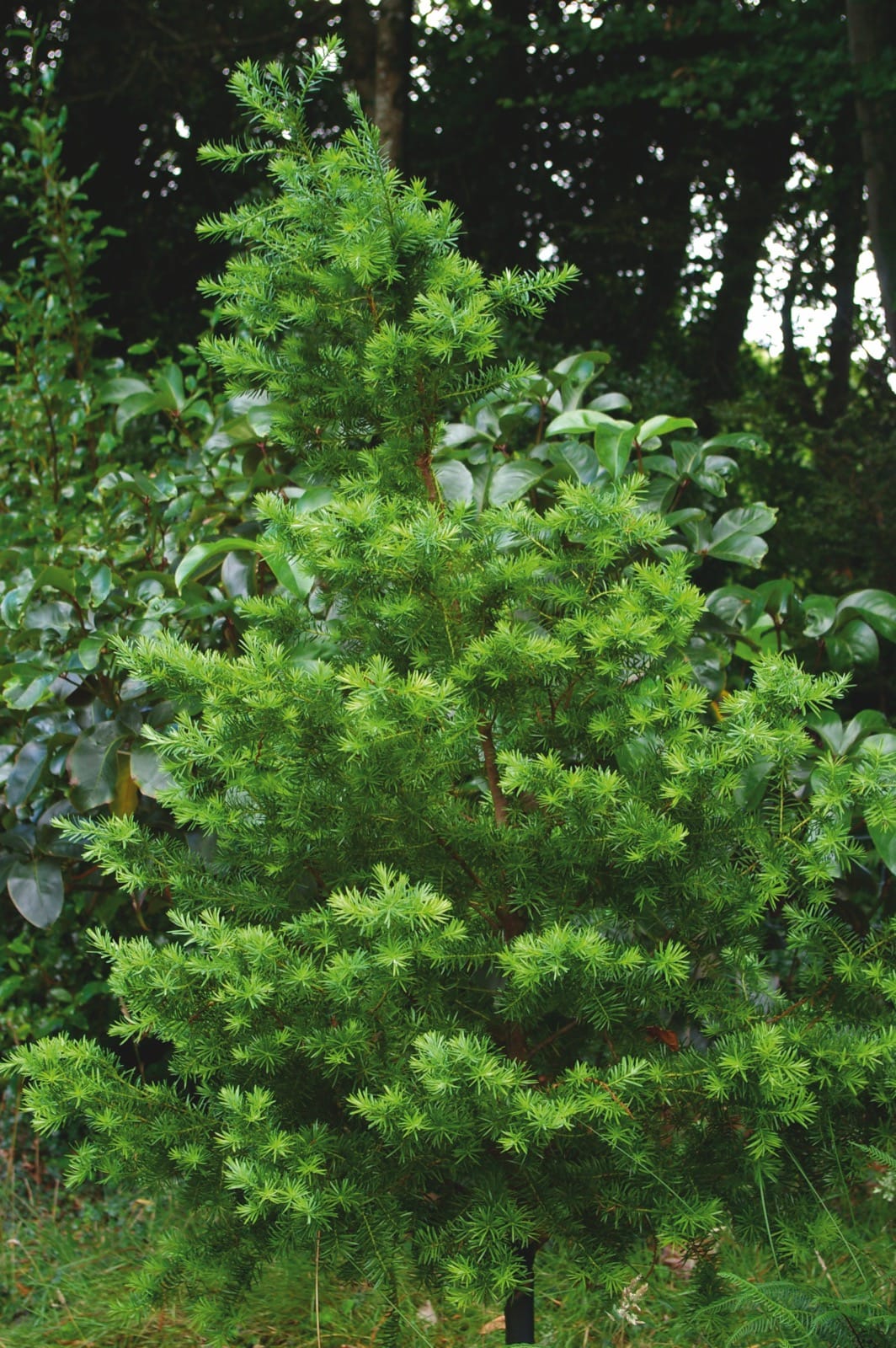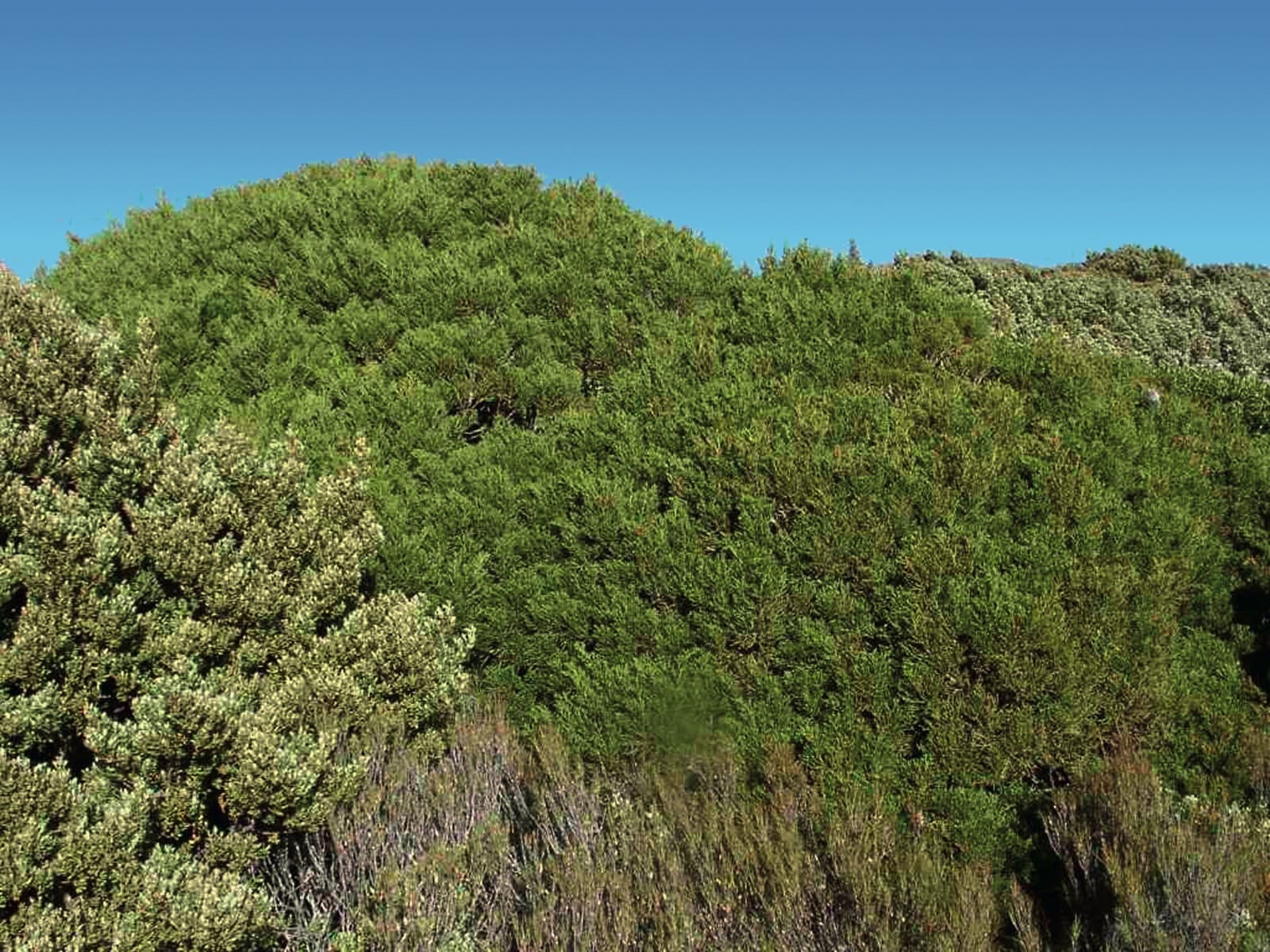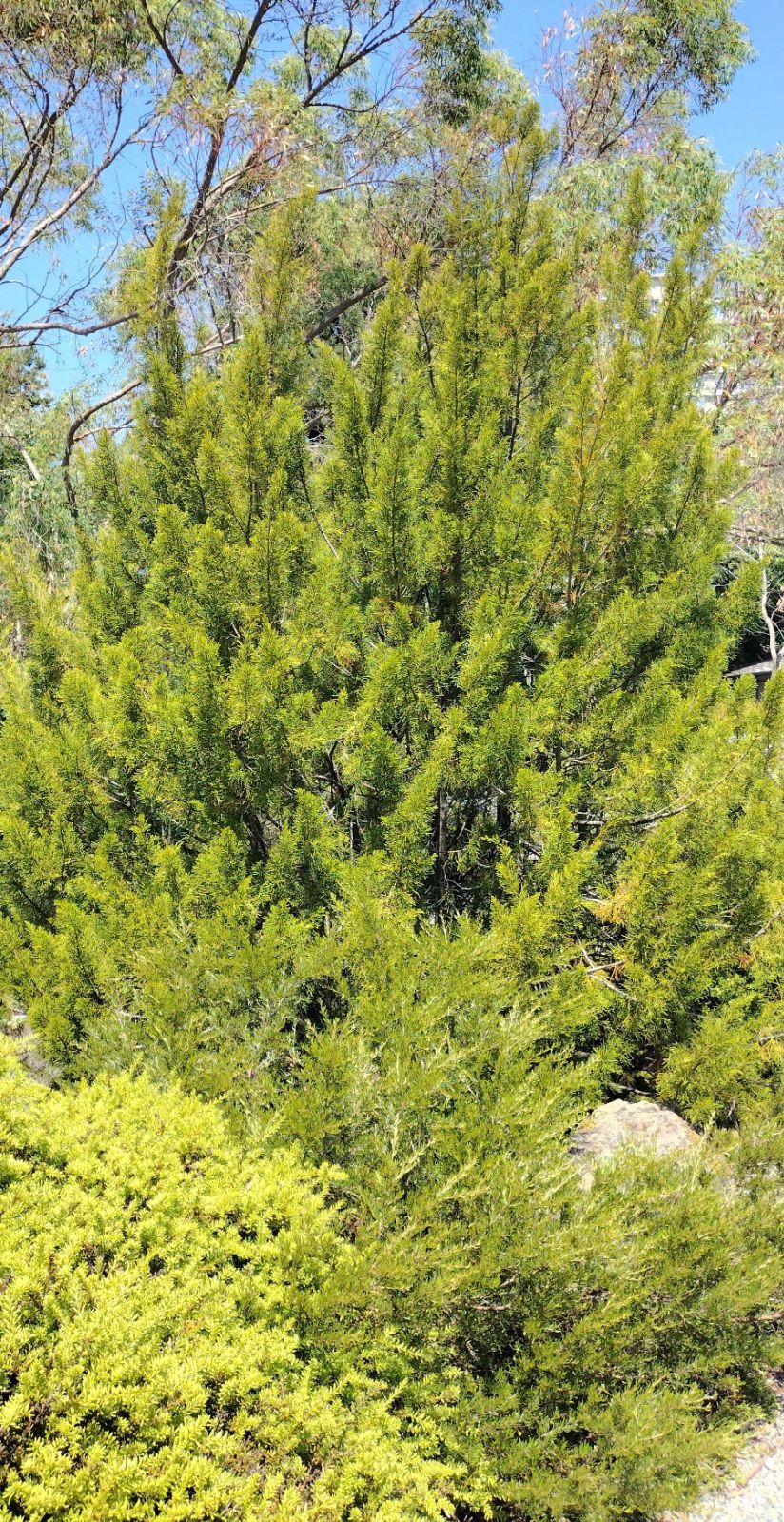Halocarpus
Credits
Article from New Trees by John Grimshaw & Ross Bayton
Recommended citation
'Halocarpus' from the website Trees and Shrubs Online (treesandshrubsonline.
Family
- Podocarpaceae
The three species of Halocarpus are endemic to New Zealand. All were formerly placed in Dacrydium but are not closely related to members of that genus as currently defined (Quinn 1982). They are dioecious trees or shrubs with an abrupt demarcation between juvenile and adult leaf forms. Juvenile leaves are flat and linear; adult leaves small but broad, imbricate, appressed and scale-like. Male strobili are solitary, sessile, terminal; female cones solitary, sessile, terminal, with several elongated, foliose scales, of which one to five are fertile, terminating in a central, sterile appendage. Each fertile scale bears a single, inverted ovule, completely enclosed at maturity in the epimatium, which changes colour from green to dark brown or black. A white, fleshy, aril-like collar surrounds the base of the mature cone (Quinn 1982) – the ‘halo’ from which the generic name is derived.
Two species of Halocarpus are described here, but both are extremely rare in cultivation. A third species, the shrubby H. bidwillii, has been cultivated for some time (see Bean and Krüssmann: B3, K111; in both cases as Dacrydium bidwillii Hook. f. ex Kirk), but remains scarce. All are best propagated from seed, though cuttings are also possible. A mild, moist situation would be most suitable.



